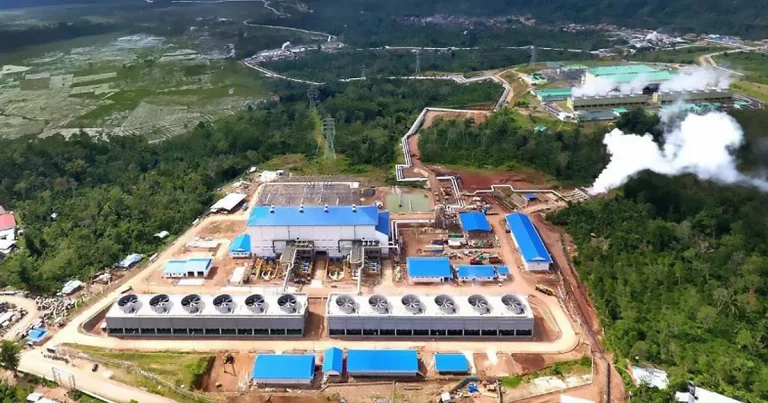26-10-2023 (JAKARTA) PT Pertamina Geothermal Energy, Indonesia’s largest geothermal company and a state-owned enterprise, is looking to capitalize on the region’s shift towards green alternatives by exporting clean energy to neighbouring countries. With Indonesia’s abundant geothermal resources, thanks to its location on the Ring of Fire, the company sees great potential in harnessing this renewable energy source.
Indonesia currently possesses 40 percent of the world’s potential geothermal resources, estimated at 24 gigawatts, yet it is only utilizing 10 percent of this energy potential. As the global urgency to transition to renewables intensifies in the fight against climate change, experts emphasize the need for geothermal companies to seize the opportunity and tap into more green energy sources.
Indonesia ranks among the top geothermal energy producers globally, boasting over 300 geothermal sites. For example, on the slopes of Mount Guntur in the West Java province, geothermal energy is extracted from the Kamojang crater. Geothermal exploration in Kamojang began in 1926, with the first geothermal well drilled during the Dutch colonial era. Remarkably, almost a century later, the well continues to emit steam at high pressure. Managed by Pertamina Geothermal Energy, the Kamojang geothermal power field represents Indonesia’s inaugural geothermal facility.
“The advantage of a geothermal system is that it can operate 24 hours, seven days a week,” explained Hanifah Bagus Sulistyardi, the operations manager at Pertamina Geothermal Energy (Kamojang). “The energy supply is not intermittent, compared with solar. The solar energy power plant can only operate a certain number of hours per day and cannot operate at night.”
The geothermal industry is capital-intensive, and companies face substantial investment risks, particularly during the exploration and drilling stages. As a result, the cost of electricity generated from geothermal energy tends to be higher. Pertamina Geothermal Energy currently operates six geothermal plants across Indonesia, with a total installed capacity of 672 megawatts. The company has ambitious plans to expand its capacity to 1 gigawatt within two years and aims to grow its business by exporting renewable energy.
“We have very significant hubs of geothermal (energy) in Sumatra,” stated Julfi Hadi, President Director of Pertamina Geothermal Energy. He emphasized that Indonesia possesses geothermal reserves that can be shared with neighbouring countries “to ensure our climate change objectives can be collectively achieved.”
While the prospect of exporting geothermal energy from Indonesia holds promise, it may not materialize in the immediate future. Indonesian law currently stipulates that energy firms can only sell electricity to the state-owned power company PT Perusahaan Listrik Negara. Yudo Dwinanda Priaadi, the Director General of New Renewable Energy and Energy Conservation at the Ministry of Energy and Mineral Resources, acknowledged that Indonesia’s electricity demand is expected to rise as the country develops. He affirmed that the government prioritizes domestic interests before considering exports.
Indonesia has set its sights on achieving net-zero greenhouse gas emissions by 2060 and aims to have renewables account for almost a quarter of its energy mix by 2025, reducing its reliance on fossil fuels. Earlier this year, Indonesia and Singapore agreed to transport 2 gigawatts of solar power from Batam island to Singapore. Geothermal plants are expected to play a crucial role in Indonesia’s renewable electricity supply.
“In today’s world, a climate-constrained world, having green electricity is like gold,” remarked Fabby Tumiwa, an energy transition strategist and the Executive Director of the Institute for Essential Services Reform. “Increasing renewable energy in your power system will reduce energy intensity and enhance competitiveness.” The pursuit of green electricity aligns with Indonesia’s commitment to a sustainable future and positions the nation as a key player in the global transition to cleaner energy sources.




